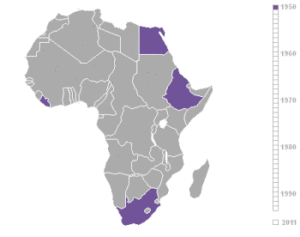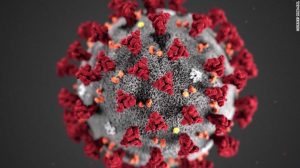CNN —
In the days following the collision of a military helicopter and a passenger jet in Washington, DC, and the crash of a medevac jet in Philadelphia, federal investigators quickly expressed condolences to the families of the victims and partnered with non-profit groups to provide information and support.
It wasn’t always that way.
As aviation authorities and transportation safety teams focused on recovering the wreckage and piecing together what might have caused the accidents, the families of the victims were often left frustrated by a lack of information and the slow pace of the investigations, which can often take a year.
Nearly 30 years ago, an airliner exploded shortly after departing New York’s John F. Kennedy International Airport, leaving authorities with a difficult and complex investigation and families demanding answers.
From the tragedy and the tireless efforts of advocates, an act of Congress mandated the government to offer support to families following airline disasters.
TWA Flight 800
Photos: TWA Flight 800
1 of 10
In 1996, Paris-bound TWA Flight 800 was carrying 230 people when it explodedminutes after taking off, killing everyone on board. The plane’s wreckage fell into the Atlantic Ocean off Long Island. With help from the US Navy, the US Coast Guard and contracted fishing trawlers scouring the ocean floor, investigators were able to recover more than 95% of the aircraft, and, after almost a year, the remains of all who died were also recovered.
The tragedy prompted one of the largest and most expensive aviation investigations in history and set off a flurry of conspiracy theories, though the NTSB eventually deemed it an accident and found no evidence of foul play.
Following the 1996 TWA Flight 800 explosion and an exhaustive four-year investigation, Frank Hilldrup, an NTSB official who was on the original team of Flight 800 investigators, and his team determined the probable cause of the explosion was an electrical short, which detonated vapors in the center wing fuel tank, though they never definitively determined where the initial spark came from.
The family members of the Flight 800 tragedy reportedly struggled to get information from officials, while others seemingly understood the intricacy of the crash.
“We saw an enormous, tremendous amount of destruction,” Jose Cremades, a family member of one of the victims, said in 1997 while viewing the reconstructed wreckage from the airliner. “The plane is really in small pieces, and we have understood today the complexity and the enormity of the task that both the FBI and the NTSB are facing. And I think they’re doing a wonderful job.”
Support for families
The explosion led to legislation, the Aviation Disaster Family Assistance Act, which would forever change the way plane accident victims’ families and loved ones are treated.
“The Act requires air carriers to develop and maintain plans that address the needs of families of passengers involved in aircraft accidents,” according to a document from the National Transportation Safety Board. “The law also requires that at a minimum the air carrier’s plan should include the eighteen assurancesoutlined in the legislation.”
Under the act, the NTSB “is responsible for coordinating federal government resources to support local, state, and tribal governments, disaster relief organizations, and the air carrier to meet the needs of families.”
Peter Goelz, former managing director of the NTSB, told CNN in 2000 the Aviation Disaster Family Assistance Act was created when it “became clear to the NTSB and to the Congress and to others that families deserved more information and more targeted care after these kinds of disasters.”
“So, when a disaster happens, family members get information from the government first, before the media. They are briefed on a regular basis. And what we’re trying to do is not compound the tragedy,” Goelz said.
Following the collision in Washington, DC, the law was put into action by the NTSB.
Todd Inman with the agency on Friday said, “We did family briefings last night and today, there are over 100 family members that are now in the area receiving briefings. And it’s part of the legislative requirement receiving Family Assistance.”
Inman said the families have been briefed by the medical examiner, fire chief, NTSB chairman and family assistant unit from the airline.
American Airlines said its CARE Team arrived at the scene before sunrise Thursday. According to the company, the CARE team is a specially trained group that compassionately supports family members of the passengers and crew members in the aftermath of the accident.
“American has so far deployed 175 CARE Team members to Washington, D.C. and Wichita, Kansas. All CARE Team members have been assigned to the families,” Andrea Koos, with American Airlines, said.
The CARE team, who are available 24/7 for families, also coordinates travel arrangements for family members and helps with accommodations for child care, elder care and pet care, the company said Saturday.
The legislation also tasks the NTSB with designating an “an independent nonprofit organization,” such as the American Red Cross, to coordinate “the emotional care, psychological care, and family support services” of those hurt in an accident or the family members of those hurt in an accident.
Searching for answers
Democratic Sen. Tim Kaine of Virginia, who’s been a vocal critic of congestion at Reagan National Airport, warning it was only a matter of time before there was a deadly collision, said he believes the NTSB will determine what led to Wednesday’s incident.
“I do believe the NTSB will get to the bottom of it. I have a feeling I know some of the things they will find. I’m confident that they’ll give us answers, and then that Congress and the administration together have to provide solutions following their recommendations,” Kaine told CNN’s Jake Tapper on Sunday’s “State of the Union.”
Meanwhile, as the NTSB works to issue a preliminary report on the cause of the collision within 30 days, family members are dealing with their loss.
“I’m just so in shock right now,” Andy Beyer, whose daughter and wife were among the victims, told CNN. “And there’s like a place in my mind that I can’t get near with all of the pain and grief. It’s like the door in my house to my daughter’s room. I just can’t go anywhere near it.”
CNN’s Pete Muntean, Chris Boyette, Jessica Coacci, Taylor Galgano and Devan Cole contributed to this report.
Source: https://www.cnn.com/2025/02/03/us/air-crash-victims?cid=ios_app




